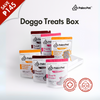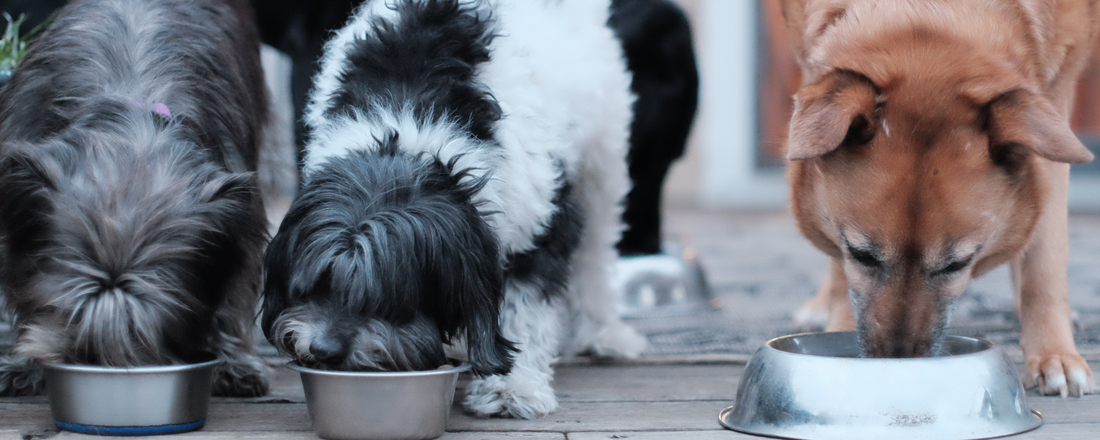The inception of commercial pet food marked a significant departure from the traditional diets of domestic dogs, which were closely aligned with the diets of their wild ancestors, wolves.
This article explores the origins of commercial pet food, the reasons behind its creation, and how it compares to the natural diet of wolves.
Historical Context
The history of commercial pet food can be traced back to the mid-19th century. Prior to this, dogs primarily fed on scraps from their human counterparts or what they could hunt or scavenge themselves.

This changed in 1860 with the introduction of the first processed dog food by James Spratt, an electrician from Cincinnati who concocted a biscuit made of wheat, vegetables, beetroot, and beef blood after observing dogs scavenging for leftover biscuits at a shipyard in London.
Reasons for the Development of Commercial Pet Food
The development of commercial pet food was driven by several factors:
-
Urbanization
- As populations moved from rural areas to cities, the traditional sources of food for dogs—such as table scraps and available raw meats—became less accessible. This shift necessitated a more convenient and stable source of pet food.
- Economic Factors
- The industrial revolution brought about new methods of preserving and processing food, which made it possible to create pet food that could be mass-produced, stored, and sold at a profit. - Veterinary Influence
- In the early 20th century, the burgeoning field of veterinary science began to influence pet food formulations. Vets started recommending specific diets for pets' health, which fueled the growth of the pet food industry. - Marketing and Consumerism
- As the pet industry grew, so did the understanding of pets as family members rather than just working animals. This cultural shift led to an increase in demand for specialized pet products, including food.
Composition of Commercial Pet Food
Initially, commercial dog food was primarily composed of meats, grains, and assorted fillers. Over time, manufacturers began incorporating a variety of ingredients including vitamins, minerals, by-products, and preservatives to increase shelf life and reduce costs.

This shift has been both praised for improving pet food accessibility and criticized for straying too far from a dog's natural carnivorous diet.
Comparison with a Wolf’s Diet
Wolves, the closest wild relatives of domestic dogs, subsist on a diet predominantly made up of animal proteins and fats, with minimal carbohydrates.

Their diet includes:
- Large Prey
- Wolves consume deer, elk, and other ungulates, eating many parts of the animal, including muscle meat, organs, bones, and even some stomach contents, which may include pre-digested plant material. - Small Animals and Occasional Fruits
- Depending on availability, wolves also eat smaller mammals, birds, fish, and occasionally fruits or berries.
This diet is high in protein and fat, with very low carbohydrate content, which is optimal for the dietary needs of canines who utilize protein/fat as their primary energy source.
Impact on Health
The transition from a natural, raw diet to a predominantly processed one has raised health concerns among veterinarians and pet owners alike.

Common issues include:
- Obesity
- High-carb, high-calorie commercial diets can contribute to weight gain. - Dental Problems
- Unlike raw hide and meat which help clean teeth naturally, soft, processed foods can lead to plaque buildup and dental diseases. - Allergies and Sensitivities
- The inclusion of various additives and non-meat proteins can trigger allergic reactions in some dogs.
Conclusion
While commercial pet food has undoubtedly offered convenience and benefits such as balanced nutrition and longer shelf life, it is a significant departure from the natural diet of wolves.
For those looking to provide a diet closer to what nature intended for their canines, there are now options available including premium, grain-free, and raw diet formulations that aim to mimic the ancestral eating patterns of dogs.
As we advance, it is crucial to balance convenience with nutritional integrity to ensure our pets receive the healthiest, most natural diet possible.
As the pet food industry continues to evolve, ongoing research and innovation will be vital in bridging the gap between commercial convenience and natural canine dietetics, ensuring that our domestic dogs lead longer, healthier, happier lives.


